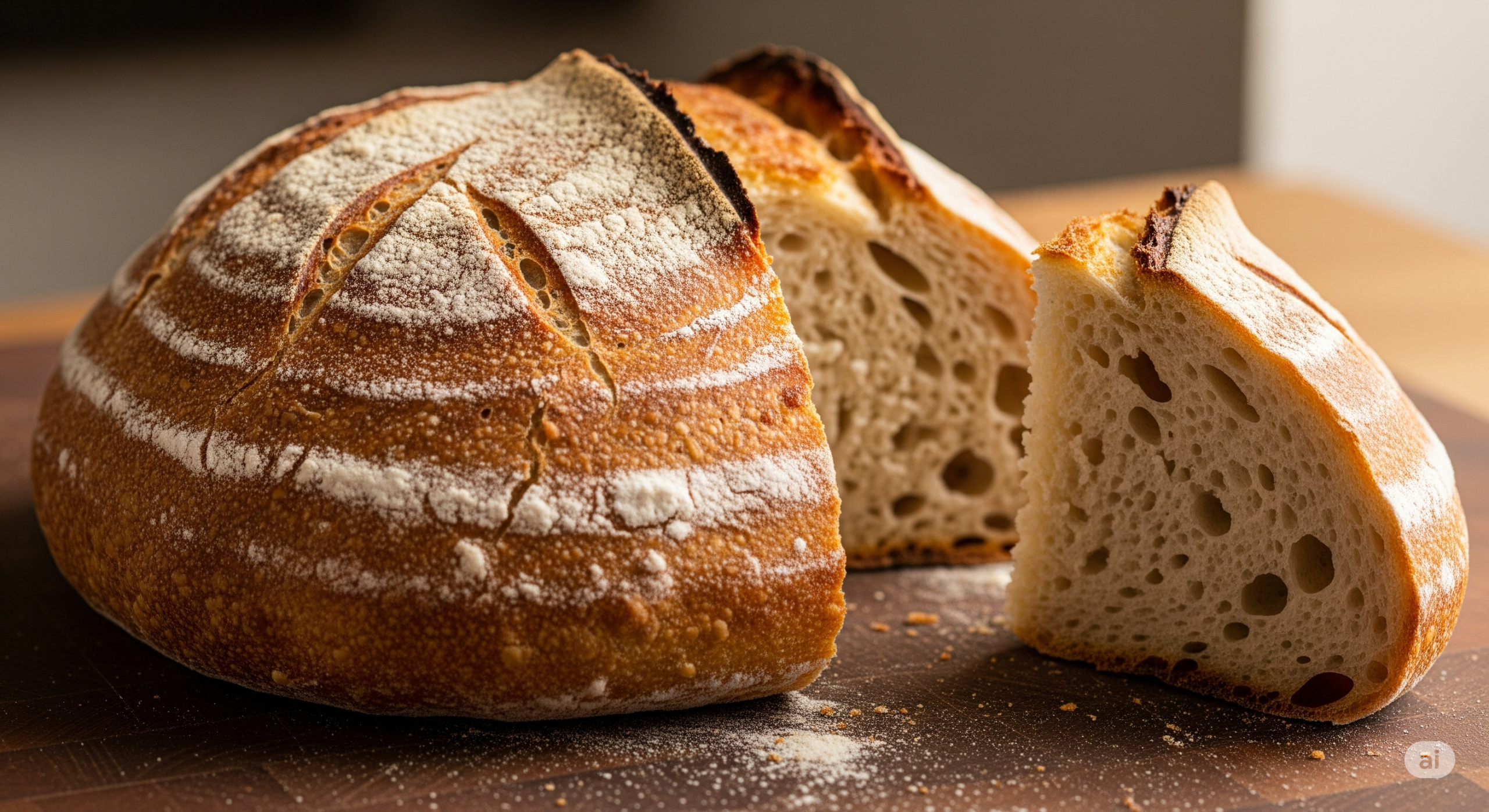1. What is Sourdough Bread?
Sourdough bread is made by using a ‘natural starter (levain),’ which is cultivated naturally from flour and water, instead of commercial yeast, and fermenting it slowly over a long period. This special fermentation process gives sourdough bread health benefits that distinguish it from other breads.
2. The Fermentation Process and Glycemic Response
– Acid Production: The lactic acid bacteria and wild yeasts in the natural starter produce lactic acid and acetic acid during fermentation. These acidic components play a key role in lowering the bread’s glycemic index (GI).
– Delayed Digestion Speed: These acids slow down the rate at which the starch in the bread is broken down into glucose by our body’s digestive enzymes. As a result, blood sugar rises more slowly and gradually compared to white bread made with commercial yeast.
– Role as a Prebiotic: Furthermore, some components produced during fermentation can act as ‘prebiotics,’ which are food for the beneficial bacteria in our gut, thus contributing to gut health.
3. Points to Note
– Whole Wheat Sourdough: Even with sourdough, choosing a ‘whole wheat sourdough,’ which is richer in dietary fiber, is much better for blood sugar management than one made with white flour.
– Portion Control: Even if it has a better glycemic response, the main component of sourdough bread is still carbohydrates. Therefore, you must control the portion size when you eat it.
Summary: Thanks to the acids produced during its unique fermentation process, sourdough bread has the effect of raising blood sugar more gradually than regular white bread. When a person with diabetes is choosing bread, whole wheat sourdough can be a good alternative.


Leave a Reply